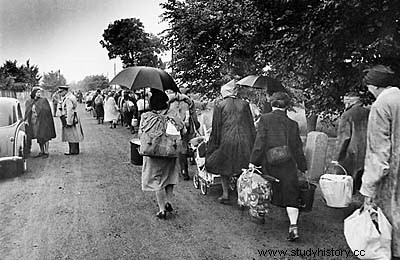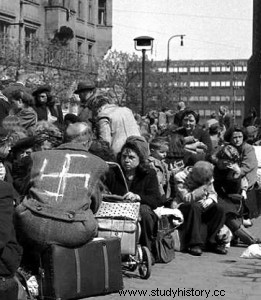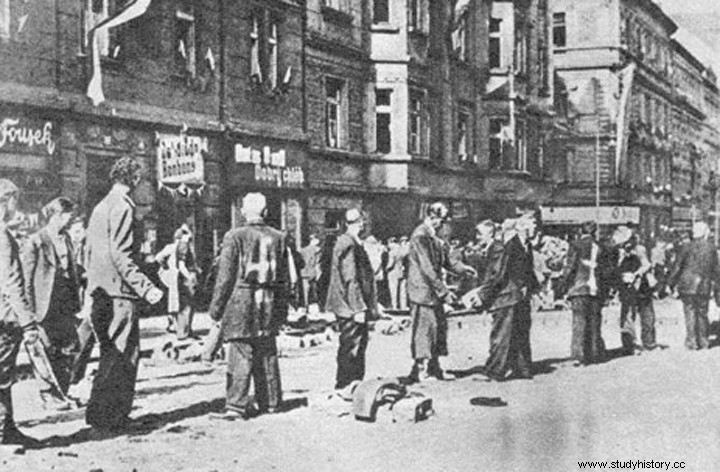Hildegar Fink , 75-year-old German, she was only five years old when she was expelled along with her family from her Rosternitz , a town in the Sudetenland in today's Czech Republic. Months after Germany lost the war, she and her family, like many others, were beginning to pay off the debt of having been Germans in Nazi Germany. Overnight they had to leave their homes, like thousands of Germans from Central and Eastern Europe, in an unknown direction. For her, Fink was the most horrible experience she can remember, but then, when the unification of Germany was consolidated in the early 1990s, she also felt like a foreigner. Sudeten Germans demand repeal of 1945 Decrees signed by Czech President Edvard Benes (1894-1948). Its enactment meant the expulsion from this country of the German and Hungarian minorities, the expropriation of their property, the nationalization of their companies and the loss of their nationality by being expelled just for being German.

Many were forced to leave their homes, others fled in fear of the Red Army or Czech or Polish militiamen, others feared reprisals from their neighbors as revenge for the recently revealed atrocities committed by the Nazis in the territories of the Third Reich; others were forced to sign, before being expelled, that they renounced all their property and where they declared “leave freely ”. Furthermore, since the Potsdam Conference in August 1945, the Allies had decided to move Germany's border to the line formed by the Oder and Neisse rivers, which meant the transfer of thousands more Germans or people of German origin within the new German borders. The curious thing is that after almost 60 years of World War II, and accustomed to bowing their heads for the crimes of Nazism and tired, perhaps, of always being executioners, they began to show themselves as victims of Contemporary History.
Why was this taboo broken? In the 1950s, the German Federal Republic did not have time to repair the Nazi past because there was a whole country to rebuild, while in the German Democratic Republic they ignored everything that the Polish and Czech militiamen committed to the German population in revenge. for Nazi crimes. It was the Balkan wars in the 1990s, with their ethnic cleansing and wave of refugees, that made the Germans remember and understand the demands of the Sudetenland, as they saw the same images of German expulsions after the World War II. Germany took more than 60 years to understand that they were also victims, and even remembered the indiscriminate bombing at the end of World War II in German towns without any sense. For many historians ignored until then, these Germans were the last victims of Hitler.

Books by Guido Knopp and Enrik Franzen contain color and black-and-white images of the atrocities suffered by the Germans after the exodus:corpses on the sidewalks, women and children fleeing, small children in the middle of the street, thousands of women raped by the Red Army and militias, men nudes being beaten with the swastika painted on their backs and some photos of women and men with white armbands with a large N by Niemiec (German in Polish) in revenge for the Star of David that Jews were required to wear during the Nazi regime.

But now a debate arises that still does not have a clear position, not only in Germany but with the neighbors of Eastern Europe. There were plans to build a Center Against Expulsions in Berlin, but it was not well received, especially in Poland and the Czech Republic. It was not until 2009 that Angela Merkel gave her support for the construction of a monument for the displaced Germans after World War II, but some consider it a mockery, since a monument was also built in Berlin in memory of the more than 6 million victims of the Jewish Holocaust perpetrated by Nazi Germany.
The Germans think it's time to also honor their own victims, since they cannot be crucified by History just for being German during Hitler's Germany.
Collaboration of Edmundo Pérez.
Sources and images:A crab's pace – Grass, G. On the natural history of destruction – Sebald, W. B.
